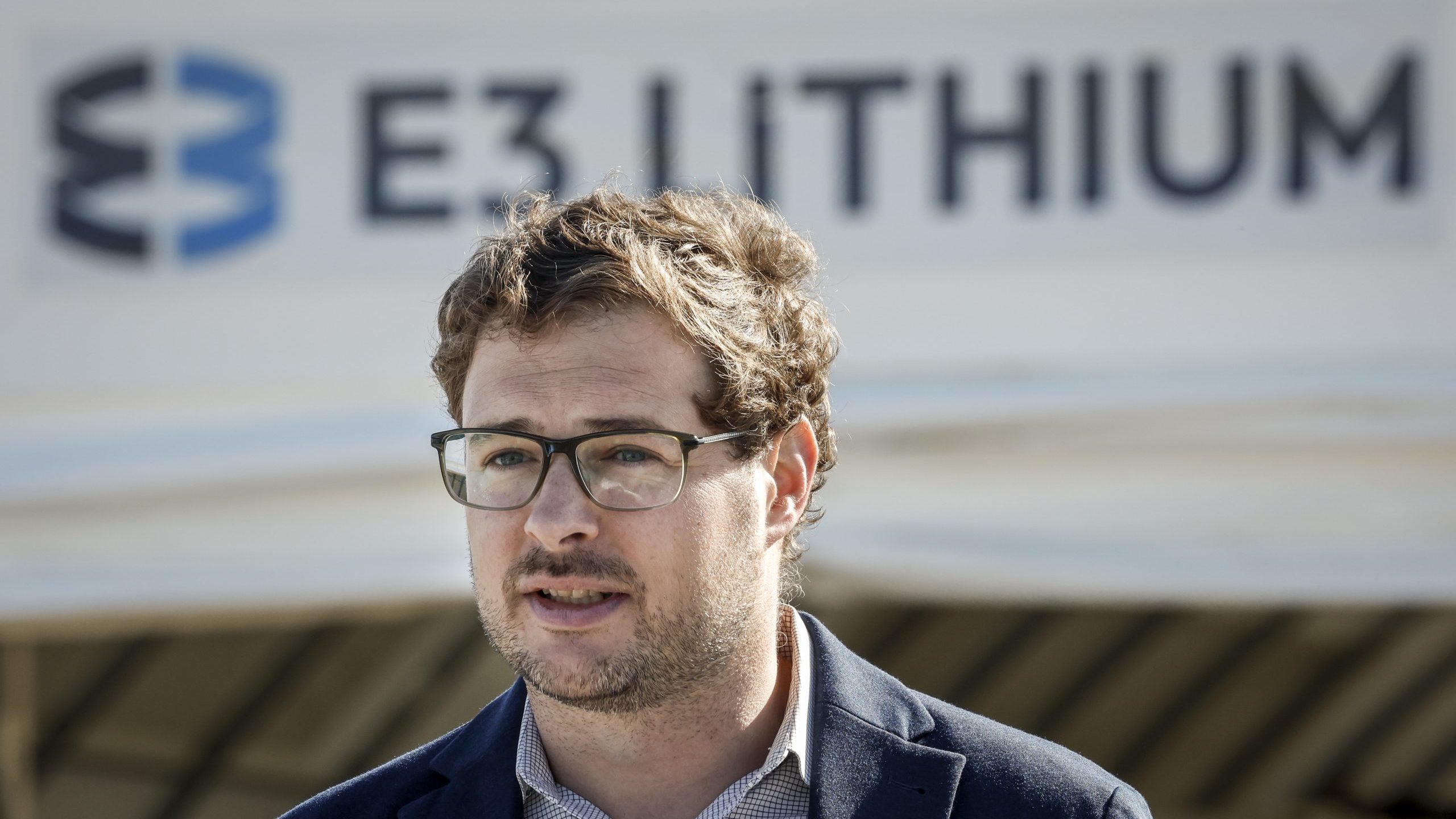Alberta’s first lithium production plant is now officially operating, heralding the province’s potential for the ultra-light metal that is used in electric vehicles and mobile phones.
Calgary-based emerging resource company E3 Lithium launched the pilot-scale project near the town of Olds on September 7.
“In my mind, western Canada is going to be one of the biggest jurisdictions for lithium on the planet,” E3 Lithium CEO Chris Doornbos told the CEC.
Using its proprietary direct lithium extraction (DLE) technology, E3 plans to demonstrate the ability to harvest valuable lithium from liquid brines that are naturally occurring in the Western Canada Sedimentary Basin (WCSB).
The WCSB underlies 1.4 million square kilometers stretching across Alberta and British Columbia, with oil and gas production starting over a century ago in 1914. Historically, lithium-containing brines were produced as a byproduct of oil and gas but re-injected underground rather than being processed and sold.
The E3 pilot project will extract lithium from brine in the historic Leduc oil play. It has funding from Imperial Oil, the company whose 1947 Leduc No. 1 oil discovery launched western Canada’s oil and gas industry.

The E3 pilot plant near Olds, Alta. Photo courtesy E3 Lithium
With lithium demand growing across the world for various electronics from cellphone to electric car batteries, E3 is staking its claim as the price of lithium has doubled since 2020.
Afshin Honarvar, the Alberta Energy Regulator (AER)’s principal economist, believes that this has opened a window of opportunity for Alberta to tap into these emerging resources.
Annual global electric vehicle production is set to grow from 3.4 million in 2020 to 12.7 million in 2024, says GlobalData, a data and analytics company. Over the same time period, battery production could grow from 95.3 gigawatt hours to 410.5 gigawatt hours. As a result, demand for lithium is expected to grow from 47.3 kilotonnes in 2020 to 117.4 kilotonnes in 2024, a 25.5 per cent compound annual growth rate.
Canada produces about 500 tonnes of lithium, ranking eighth in the world. To put that into context, the largest producer, Australia, mines 122 times the amount of lithium that Canada produces at 61,000 tonnes per year, according to the United States Geological Survey.
Emerging resources including lithium, hydrogen, helium and geothermal energy are expected to see a flurry of investment in Alberta over the coming years. The AER projects $730 million of investment this year, a 250 per cent increase from 2020. The regulator expects a total of about $9 billion invested by 2032.
If successful through its trial this fall, E3 plans on opening a full-scale lithium extraction plant by late 2026.
The unaltered reproduction of this content is free of charge with attribution to Canadian Energy Centre Ltd.
